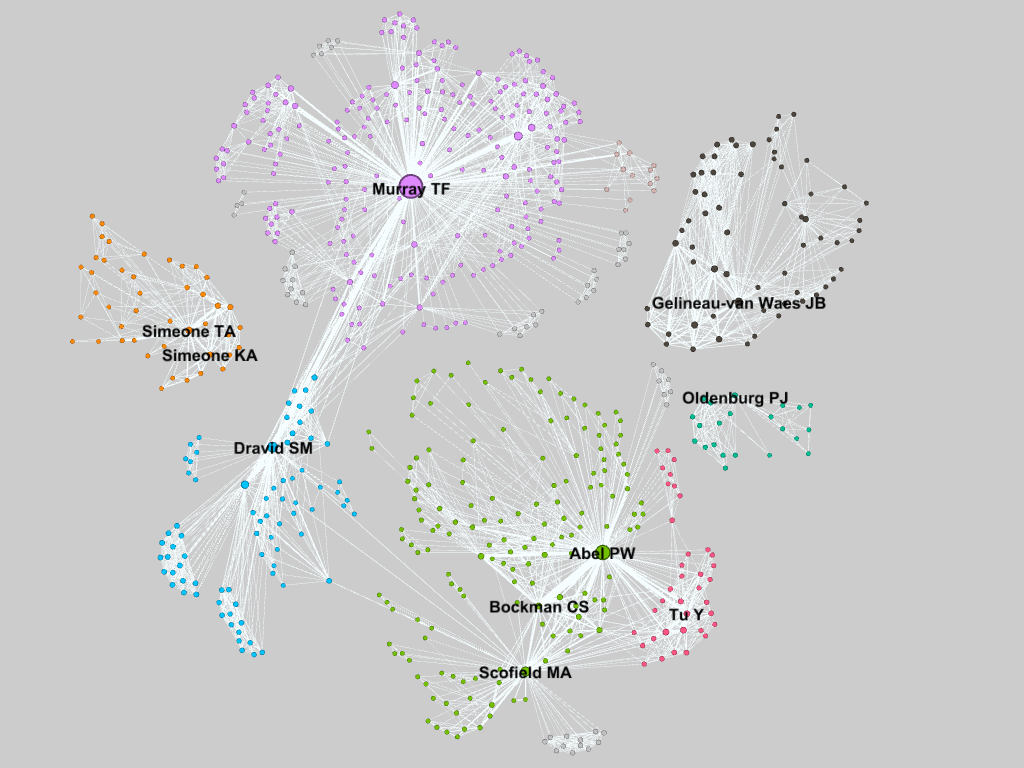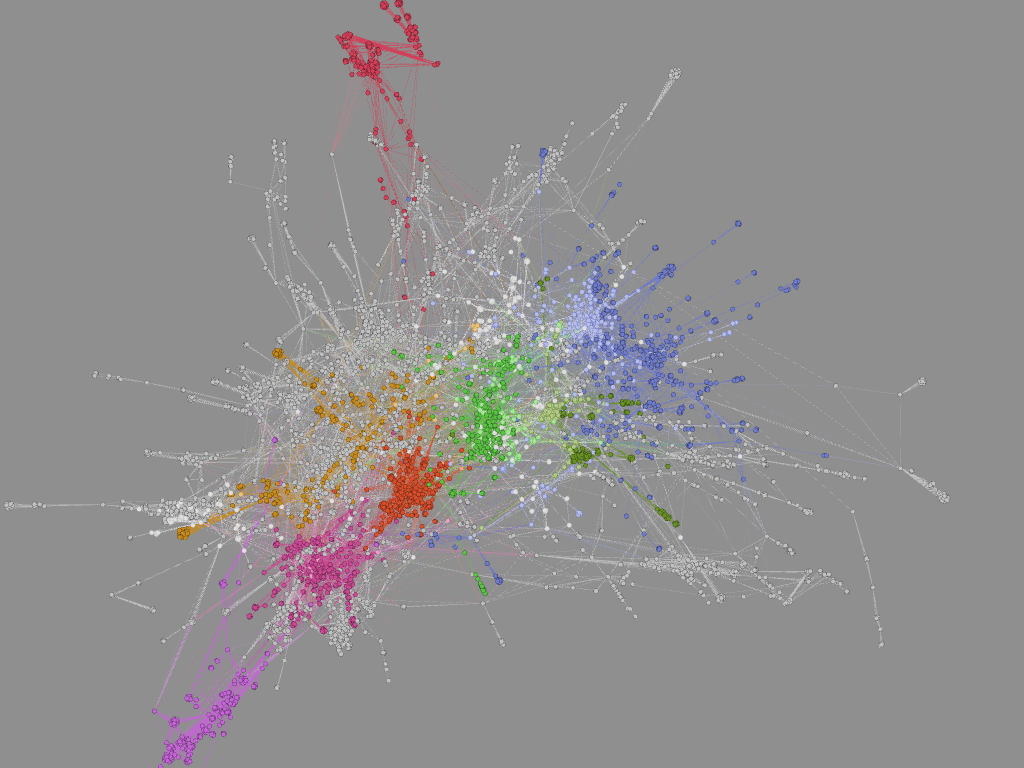|
The Department of Pharmacology at Creighton University School of Medicine is small, but mighty. There are only 10 professors or principal investigators (PIs) in the department, but this small size has its advantages. Or at least that is what we tell ourselves. A recent paper in Nature argued that bigger is not always better when it comes to labs and we are putting that to the test. Ideally with a smaller faculty, there would be more collaboration. Everyone knows what everyone else is doing, more or less, so they can more efficiently leverage the various expertise found throughout the department. To measure how interconnected the pharmacology department was I created a network analysis visualization based on who published with whom. Using NCBI’s FLink tool I downloaded a list of the publications in the PubMed database for each PI in the pharmacology department at CU. A quick script in R formatted the authors and created a two-column “edge list” for each author, basically a list of every connection. This was imported into the free, open-sourced network analysis program Gephi which crunched the numbers and produced a stunning map of the connections in the pharmacology dept: Gephi automatically determines similar clusters (seen as different colors) which are unsurprisingly centered on the various PIs in the department since those are the publications I was looking at. Dr. Murray, the department chair, has the most connections, also known as the highest degree, at 292, followed by Dr. Abel. Drs. Dravid and Scofield are ranked 2nd and 3rd respectively for betweenness centrality, after Dr. Murray. They are the gatekeepers that connect Drs. Abel, Bockman, and Tu to Dr. Murray. Each point’s size is proportional to its eigenvalue centrality, similar to Google’s Pagerank metric of importance.
I was a bit surprised at how disperse the department was. 60% of the PIs could be connected, and many have strong relationships. However the rest are floating on their own islands. Dr. Oldenburg is relatively new so this is not surprising. The Simeones (who are married) are closely connected. Also unsurprising. This was a quick and dirty analysis and a few of the finer points slipped through the cracks. Some of the names are common in PubMed (especially Tu). so I did my best to filter what was there and only look at publications affiliated with Creighton. Unfortunately this filters out publications from other institutions by the same author. Also not everyone is attributed the same way on every manuscript. This is especially true for Drs. KA Simeone and Gelineau-Van Waes who have published under different last names, but also because sometimes a middle name is given and sometimes it is omitted. I tried my best to standardize the spellings for each PI, but with over 700 nodes I could not double check every author to ensure there were not duplicates elsewhere. If more than one PI shows up on a paper, that paper may show up under both searches. This should not increase the number of edges, but would affect the “strength” of those connections. The connections are about what I had imagined. The brain people are on one side, everyone else is on the other. Expanding the search to include the papers from coauthors outside of the pharmacology department might discover more interesting connections. Just for fun I went ahead and pulled the data for every paper on PubMed with a Creighton affiliation. I could not even find my department on the visualization without searching for it. It is massive. The breadth of Creighton’s interconnected-ness forces me to marvel at how vast the community of scientists must truly be. So many people working to improve the body of knowledge of the human race. We are really just small bacteria in a very large petri dish.
1 Comment
|
Archives
July 2023
Categories
All
|


 RSS Feed
RSS Feed